Software Development
Data Repository and Publication
Through the course of iUTAH, researchers developed datasets and models as research products. We used HydroShare as a repository to support the full data life cycle for most of these resources. HydroShare provides a venue for sharing and publication of research products, and it supports discovery and access of heterogeneous datasets with clear metadata that is compliant with recognized standards. Access iUTAH datasets on HydroShare.
Sensor Data Management
The CI Team continues to support streaming sensor data from monitoring sites in the GAMUT watersheds. The CI Team assists with telemetry connections to each monitoring site, automated loading of sensor data into relational databases, and managing the tools for public web-based access and for data management and post processing. See this published paper for a full description of the sensor data workflow.
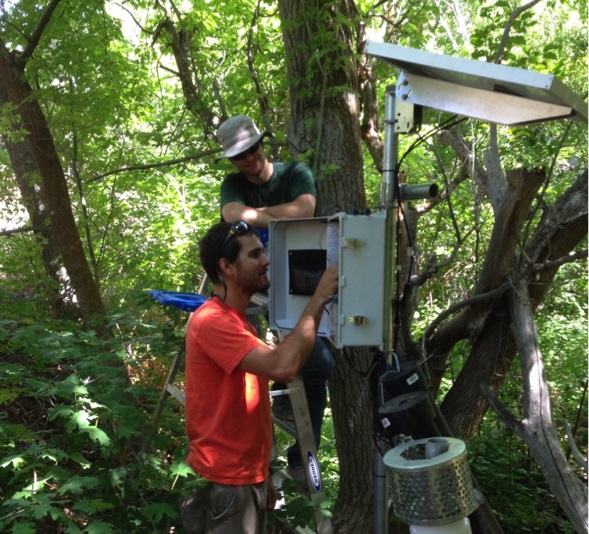
Web-Based Data Access and Visualization
The iUTAH CI Team developed a web application for visualizing, summarizing, and exporting data collected by environmental sensors at iUTAH GAMUT monitoring sites. Features include faceted searching to browse available data series, a map interface to identify data available at different sites, and different plot types with descriptive statistics.
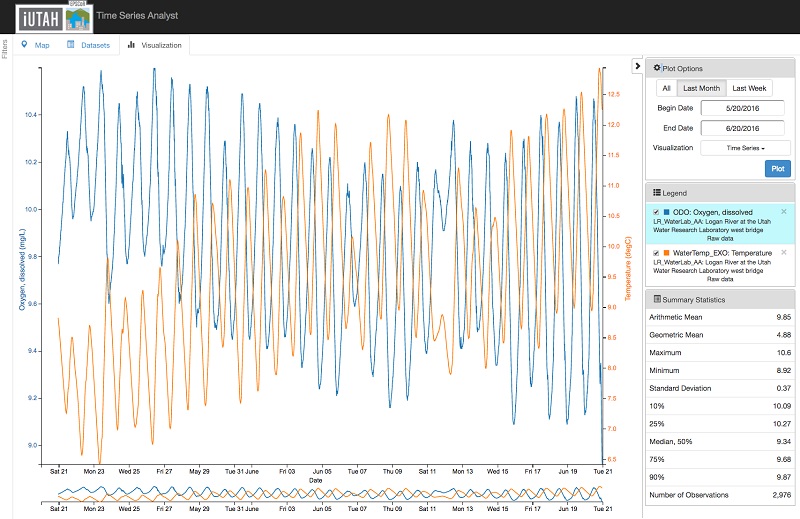
Equipment Management
Environmental monitoring networks such as GAMUT need to track physical inventory and related actions. We developed a data model and a web interface for entering, storing, and retrieving information on equipment and site visits, calibrations, and deployments. The web application is available via GitHub.
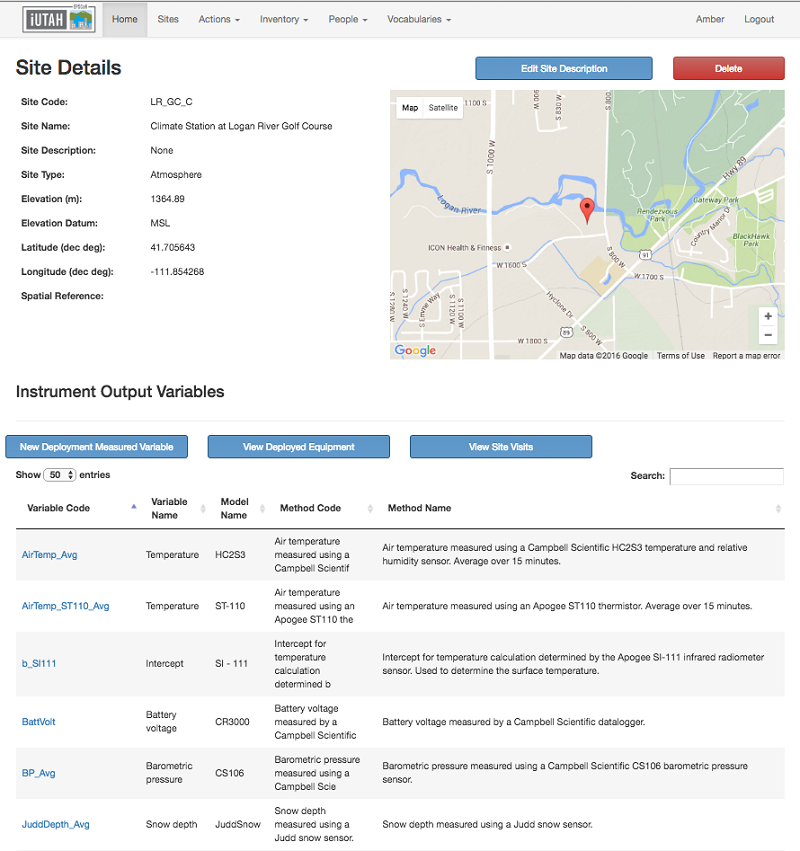
Sensor Data Quality Control
Sensor data streams typically include values that are not representative of environmental conditions and need editing due to fouling, drift, or unknown causes. The CI Team developed ODM Tools Python, an open source software application for post processing of sensor data. The software provides the functionality to move raw data to quality controlled products while capturing information about transformations to ensure that the full provenance of the data is recorded. ODM Tools Python is available on GitHub. See this published paper for additional details on the software.
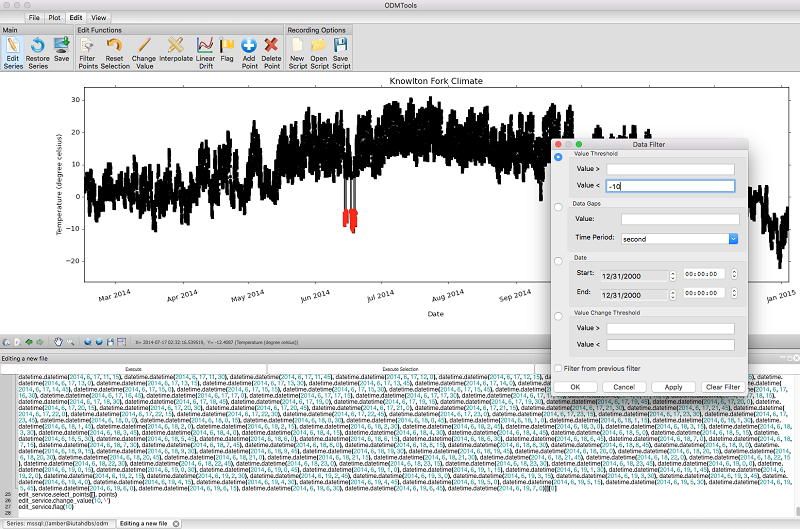
Survey Data Viewer
Social science survey data is useful for understanding perceptions regarding environmental issues. These data are often presented in static figures and reports with exploration limited to the original investigator. The CI Team developed a web-based viewer to provide access to survey data to various users. Features of the viewer include several view options and the ability to cross-tabulate data based on demographic variables. See the deployed viewer to interact with several iUTAH surveys, and see this published paper for additional details on the Survey Data Viewer.
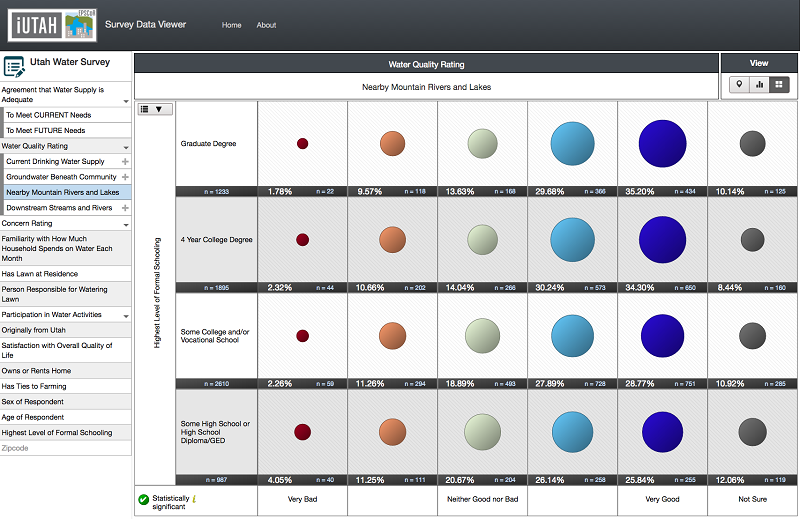
Model Coupling
Hydrologic model coupling efforts are a central focus of modern water resources research. The CI Team developed a software coupling framework to enable cross-disciplinary, collaborative, and asynchronous research. This framework borrows conceptually from other projects (e.g. OpenMI and CSDMS) to form a data-centric modeling platform. We worked to bridge the gap between observed hydrologic data and simulation computations by leveraging open data standards (WaterML and NetCDF) and relational database management systems (ODM2) . This project supports coupled water models by providing tools for (1) data discovery, collection, and analysis, (2) model design and execution, and (3) results analysis and archival. To learn more about this coupled modeling platform, visit the Environmental Model Integration Project code repository.
Streaming and Loading Sensor Data
Sensor data collected at remote field sites are typically logged and stored in text-based files. The CI Team developed software to permit automated loading of sensor data into relational databases. The functionality includes mapping of text-based files with metadata associated with time series data and scheduling regular loads of the data to ODM2 databases. See the GitHub repository for more information.
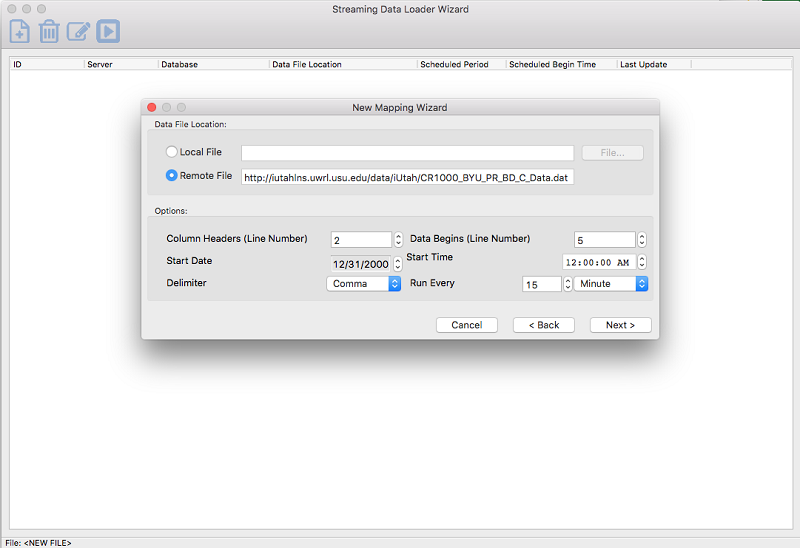
Specimen Based Data
Monitoring networks frequently collect specimens of water, soil, and air for subsequent analysis. The documentation for these data are distinct and more extensive than that of time series data. The CI Team collaborated with the ODM2 and CZO Data communities for the development of data modeling standards and specifications for specimen-based data. The CI Team developed tools to help manage iUTAH specimen-based datasets including a template for data organization, a converter to load data to a database, and a web application for viewing specimen data.
